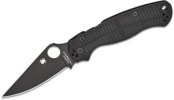Back when the most popular hunting knives were inexpensive Soligen imports, the knives were already sharpened and restoring a functional edge on a typical hunting knife required little more than a few swipes over a small pocket stone. Most hunters did it faster than the time it takes to read this sentence.
I can enjoy modern technology and blade steels, but the impact on hunting likely ranges from negligible to counter productive.
N2s
Yes and, that city was set up to be competitive to the point of making the best knives for the cheapest price, something we don't have anymore. But also, I've met a lot of those sorts of guys, and their version of sharp would just leave you feeling pity for how they live their lives, some guys do everything the hard way. But that was then, and largely, you are not wrong since a consistent billet 1095 or even 440c goes a long way to getting a good edge instead of a craftsman needing to select the "good" bars from the stock pile for a given task. (anyway, to the topic at hand)
A knife is more than the sum of it's parts, and it's enough when it meets its design goals, and is still cheap enough to be replaceable, and retain enough of a market to remain available. For example, I've got a couple Spyderco salt knives, love them. I would have gotten a Benchmade H20, mostly due to the bull-nose blade, something I wanted, but what I couldn't do was a knife without a good lanyard connection, and not grippy scales. I could have modded, but by the time I had cash to get one, they were off the market. They might have been good, but not enough for my needs on the day. You can often see design choices not meeting marketing and the complaints, (BM Bailout) but often those are keyboard warrior problems, the guy who made the design choice usually did the "right" thing, but the market and reality do not often agree.
None of my knives are show pieces, and have to be tools that fit in the budget of the job at the time. I've spent a days wage on a leatherman, knowing it will pay off long term. I've spent a days wage on a rescue knife because I know I'll willing spend a days wage to save someone if I need to. And I spent a bit more than that on my last knife so I have a nice and light hiking knife for the next time I'm out in the bush, I have a fixed that I can really rely on. (where I live as I've mentioned the trees have an RC rating) but past that, I really don't care. I can get by with less, but sometimes I want to spend a bit of money so I don't have to spend time later. In the case of the last two camping knives I've bought, I picked steels that need less sharpening because I know they will catch hell on the wood I'll put them to, and I'd rather spend an hour bringing an edge back at home on the diamonds, than ten minutes every three cuts on a little ceramic that my 1095 knives do well on.



